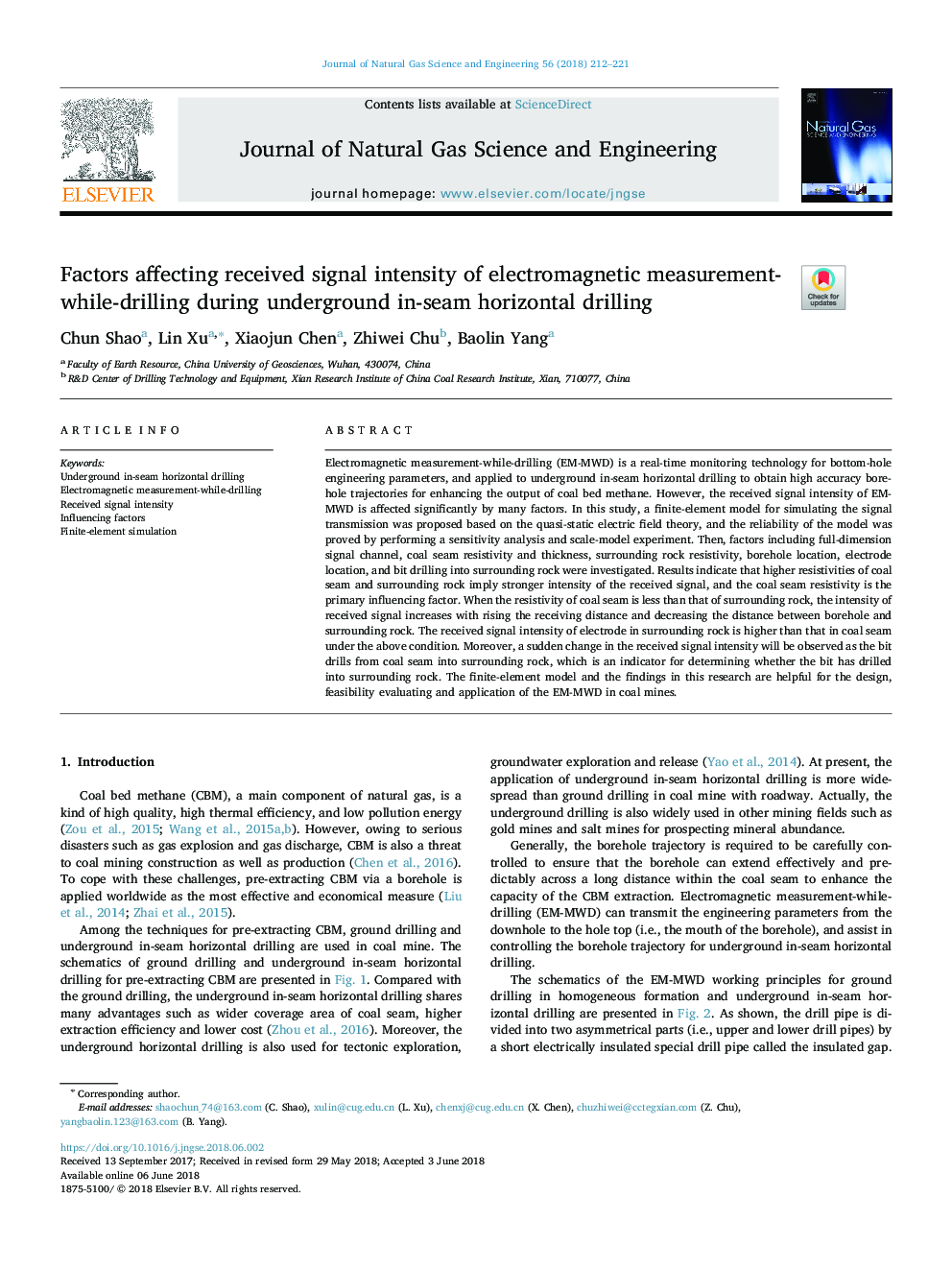| Article ID | Journal | Published Year | Pages | File Type |
|---|---|---|---|---|
| 8127877 | Journal of Natural Gas Science and Engineering | 2018 | 10 Pages |
Abstract
Electromagnetic measurement-while-drilling (EM-MWD) is a real-time monitoring technology for bottom-hole engineering parameters, and applied to underground in-seam horizontal drilling to obtain high accuracy borehole trajectories for enhancing the output of coal bed methane. However, the received signal intensity of EM-MWD is affected significantly by many factors. In this study, a finite-element model for simulating the signal transmission was proposed based on the quasi-static electric field theory, and the reliability of the model was proved by performing a sensitivity analysis and scale-model experiment. Then, factors including full-dimension signal channel, coal seam resistivity and thickness, surrounding rock resistivity, borehole location, electrode location, and bit drilling into surrounding rock were investigated. Results indicate that higher resistivities of coal seam and surrounding rock imply stronger intensity of the received signal, and the coal seam resistivity is the primary influencing factor. When the resistivity of coal seam is less than that of surrounding rock, the intensity of received signal increases with rising the receiving distance and decreasing the distance between borehole and surrounding rock. The received signal intensity of electrode in surrounding rock is higher than that in coal seam under the above condition. Moreover, a sudden change in the received signal intensity will be observed as the bit drills from coal seam into surrounding rock, which is an indicator for determining whether the bit has drilled into surrounding rock. The finite-element model and the findings in this research are helpful for the design, feasibility evaluating and application of the EM-MWD in coal mines.
Related Topics
Physical Sciences and Engineering
Earth and Planetary Sciences
Earth and Planetary Sciences (General)
Authors
Chun Shao, Lin Xu, Xiaojun Chen, Zhiwei Chu, Baolin Yang,
